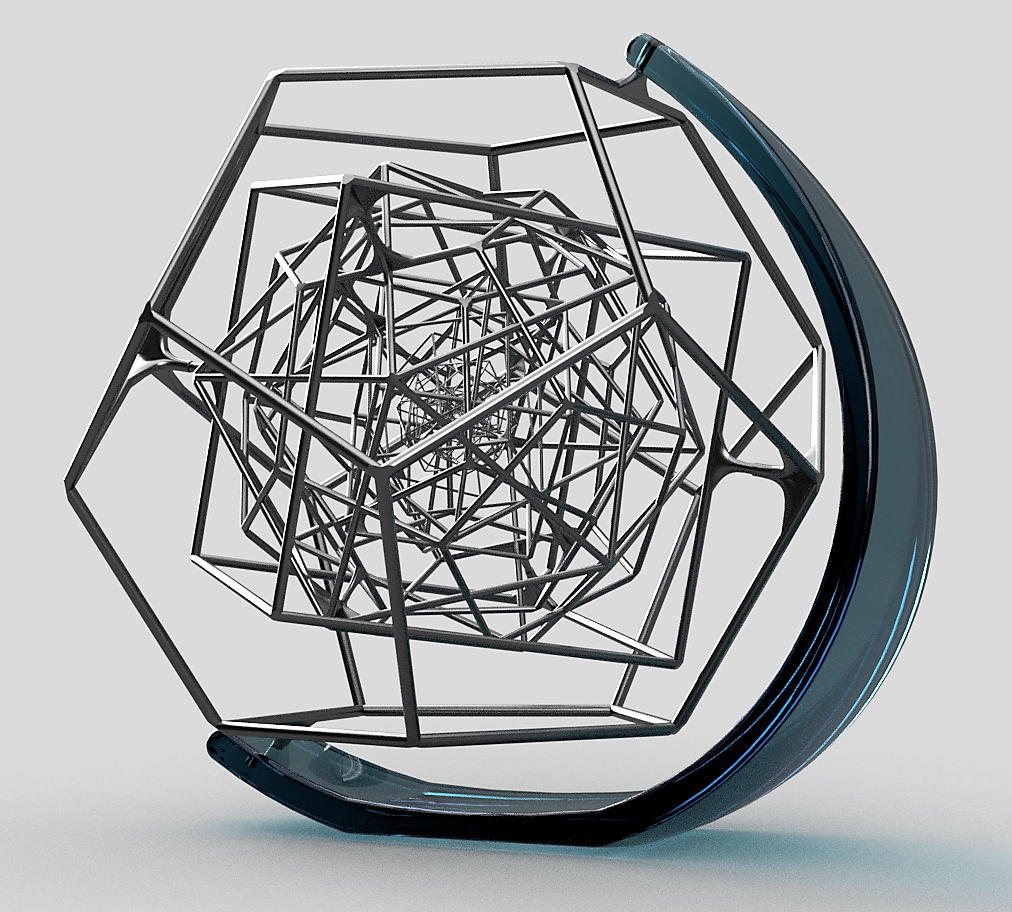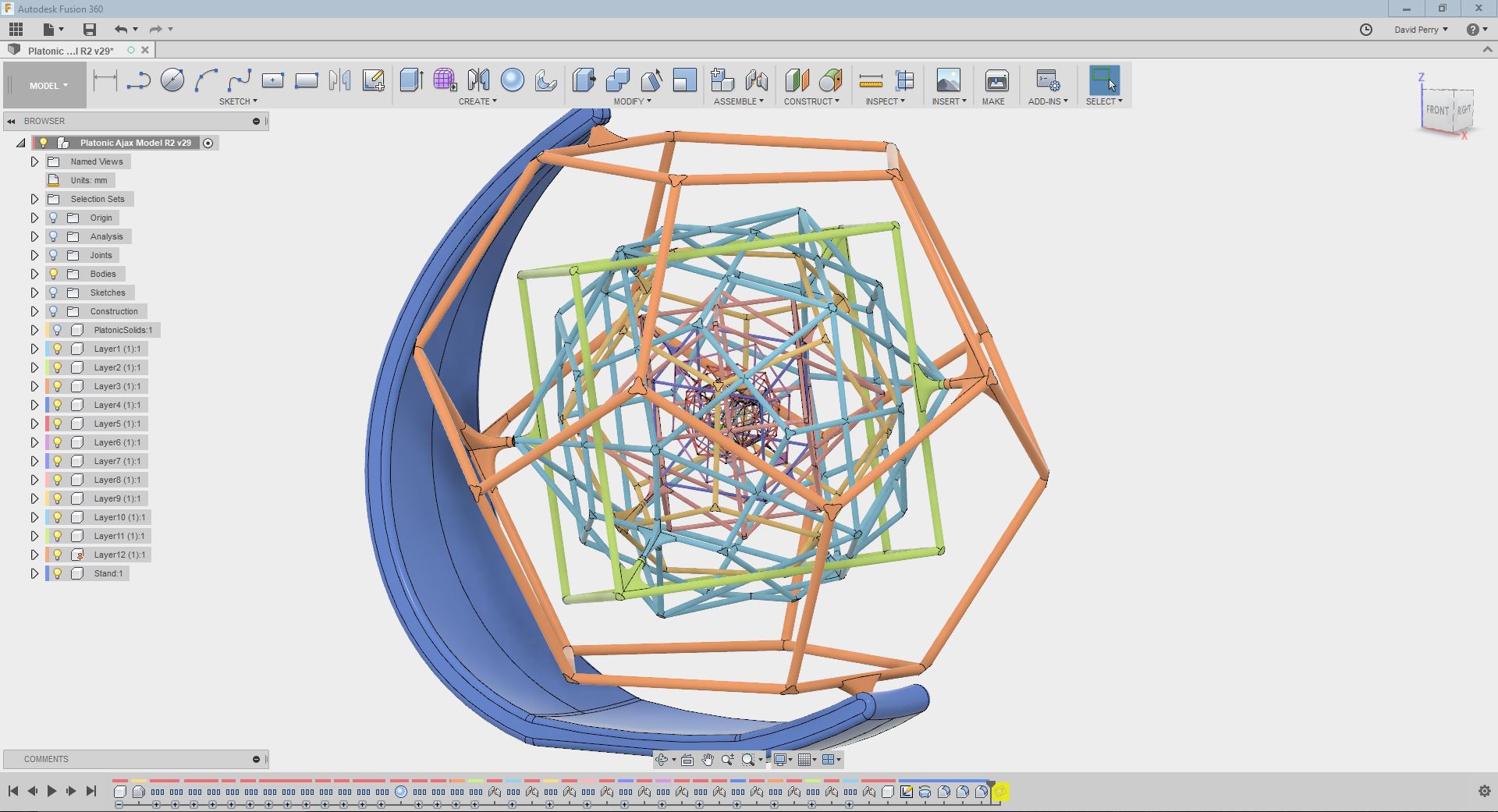The Ajax Model is a new and revolutionary representation of the periodic table. Instead of classification by atomic properties alone, elements are classified by atomic resonance and harmonic properties.
In this nested platonic model, each element occupies a vertex of a platonic solid and there are twelve layers of overlapping platonic solids. Each layer rotates within the one that encloses it. The smallest platonic is about 3/4″ across, and the largest is roughly 36 “. This model is intended as a showpiece — next we will prototype the model using a combination of 3D printed platonic solids, 3D printed vertices, and carbon fiber tubing. For more info behind the Ajax Model, check out my client’s website: Dunedain Enterprises.


As impressive as the model looks, the construction and design of the model itself is even better! It took a good bit of trial and error to get the layers sized such that they could all rotate. To enable that experimentation, the entire model is governed by a base feature of simple (solid) platonic solids. I can go back, edit that base feature, scale the solids, and the whole model will update with the adjusted sizes. Also, each layer’s tubing size is governed by a parameter that is set in a table. Each layer is jointed at the joints as modeled, such that all layers can rotate as they would in the real world.

